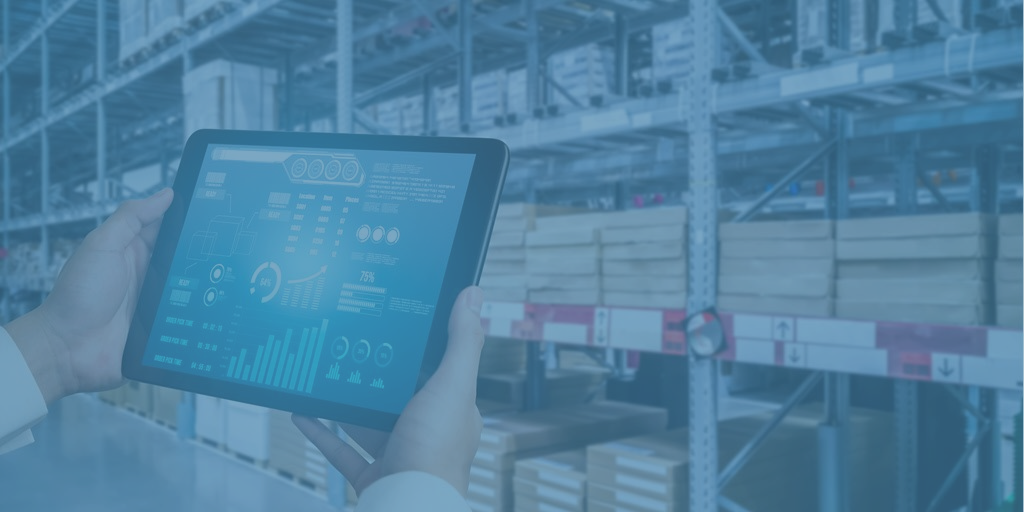Barcodes, QR Codes, & RFID in Supply Chain Management
Supply chain management is an integral part of running any business smoothly. The simple, lowly barcode is what holds the supply chain together....

Take a moment to think about the various components of your supply chain management processes. Technologies like your warehouse management system (WMS), edge computing devices, and automated packing tools are the first things that come to mind.
While these assets play critical roles in your warehouse operations, sometimes we fail to overlook how critical scanning solutions can be.
Like most organizations, barcodes are the glue that holds everything together in your facility. However, the resurgence of other technologies like QR codes and RFID tags give you additional options when selecting an inventory tracking method.
Which of these three solutions deliver the most value for your business? The answer depends on a few factors.
Barcodes are the oldest of the three technologies on our list. They're versatile, inexpensive, and straightforward to incorporate into your processes. Barcodes offer the ideal solution if you need a simple, affordable way to keep track of inventory.
Using barcodes eliminates the need to enter data into your WMS manually. You can also speed up inventorying processes, safeguard against human errors, and precisely track inventory across your entire facility.
The only major downside of barcodes is that they only offer one-dimensional data. As such, they can’t provide detailed information about a product in your inventory. Barcodes are also less accurate than QR codes or RFID tags.
The radio-frequency identification (RFID) tag market is running full throttle. It is expected to reach over $14 billion by 2026, representing an increase of over $5 billion since 2021.
Business owners have been leaning heavily into this technology due to its distinct advantages over other scanning options. RFID tags can be scanned in bulk, meaning you can quickly process and log multiple inventory items simultaneously. RFID tags are also extremely durable and can store all relevant data about a product.
RFID tags can save your business significant amounts of money and time. Your team can scan more items faster and with better accuracy, allowing them to expedite inventorying processes and get more done overall.
That said, RFID tags aren’t without their drawbacks.
Primarily, the initial investment associated with this technology is pretty high. Additionally, certain metals, liquids, and magnets can damage RFID tags. They’re also susceptible to hacking.
QR codes represent a happy medium between barcodes and RFID tags. There is a reason they are so prevalent among consumers. In 2022 alone, QR code usage among consumers quadrupled.
In terms of cost, QR codes and barcodes are about even. However, QR codes can store loads of complex product data. They’re also easier to scan than barcodes, even if they’ve suffered damage.
The only real downside of QR codes is that implementing the scanning technology can be costly, particularly in retail environments. As such, many businesses that receive your goods will incur added costs if you switch to QR codes.
Since QR codes are so affordable to print, you could put barcodes and QR codes on your packages, which gives retailers the freedom to adapt on their terms.
Adopting QR codes also enables you to provide consumers with access to detailed product information, strengthening trust in your brand and leading to improved sales volume.
Barcodes, QR codes, and RFID tags all have unique benefits, along with a few downsides. Consequently, there’s not one solution that’s perfect for every business.
Instead of trying to find the single “best” scanning solution, you should evaluate your organization’s needs, as well as your budget and the preferences of downstream vendors and retailers. Considering these factors, you can identify the most appropriate solution for your business.
High-end, complex products may need to be tracked with RFID tags. Conversely, QR codes, barcodes, or a combination thereof are the better choice when tracking and inventorying cheap consumer goods.
By strategically incorporating all three solutions into your business model, you can modernize your inventory tracking capabilities and avoid disruptive logistics headaches.
Dimensioning processes are more complex than many realize due to oversimplification. Measuring the length, width, and height of items in a warehouse may not account for variables like folding, compressing, or the orientation of objects, making it essential to consider specific factors such as softness, packaging requirements, database orientation, and nestability.
With FreightPOP's partnership with Cubiscan, you can now eliminate chargebacks and the process that goes into auditing carrier invoices and mismatches. FreightPOP and Cubiscan ensure you operate with accurate data and help you ship in the most cost-effective, streamlined way. It's easy to book a demo and find out more—reach out!

Supply chain management is an integral part of running any business smoothly. The simple, lowly barcode is what holds the supply chain together....

Forget about last year. Expert consensus indicates people are going to be hitting online shopping this Christmas more than ever before. Businesses...

The pandemic is forcing many shippers to implement tools to improve buying and selling predictability. Digitizing supply chains, a trendy term before...